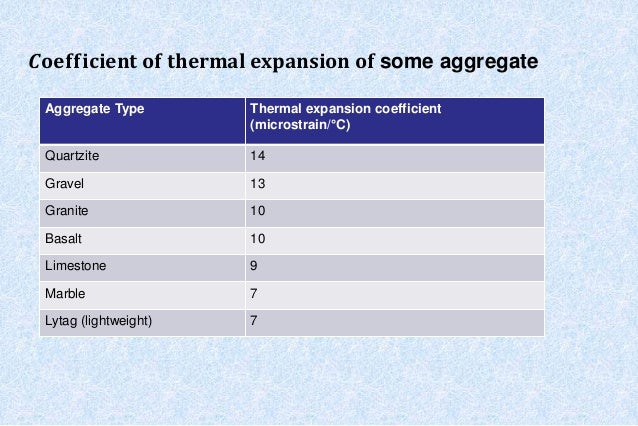The coefficient of thermal expansion of neat cement paste ranges from around 11 10 6 c to 20 10 6 c.
Thermal coefficient of expansion of marble.
Most rocks have a volume expansion coefficient in the range of 15 33 10 6 per degree celsius under ordinary conditions.
List of thermal expansion coefficients cte for natural and engineered materials.
Dl expansion in dt temperature differences c or k h heat transfer coefficient w m2.
0 9 to 1 2 x 10 5.
Thermal expansion coefficient of metals materials.
K l length m q total heat transfer watt q heat flux w m2 r thermal resistance.
Thermal expansion coefficients for some common materials.
Cement concrete quartzite.
Special thanks to reader eric.
The coefficient of linear thermal expansion clte of any material is the change of a material s dimension per unit change in temperature.
10 6 m moc 1 μm moc m m meter per meter in in inches per inches most values for temperature 25 oc 77 of.
Natural rocks used for aggregates exhibit a considerable range of thermal expansion coefficients related generally to silica content tables 15 10 and 15 11 but rarely exceed about 12 10 6 c and can be as low.
Mse supplies is a leading supplier of high quality materials equipment and materials characterization services for advanced materials research and manufacturing.
Granite 0 0000044.
Linear thermal expansion is δl αlδt where δl is the change in length l δt is the change in temperature and α is the coefficient of linear expansion which varies slightly with temperature.
This is given as the ratio of dimension change e g change in volume to the original dimension volume v per unit of temperature t change.
Heat transfer coefficient from inside h heat transfer coefficient from outside k coefficient of thermal conductivity w m.
Thermal expansion is large for gases and relatively small but not negligible for liquids and solids.
The thermal expansion of marble is about the same as granite coefficient of expansion in inches of expansion per inch of material per degree f.

